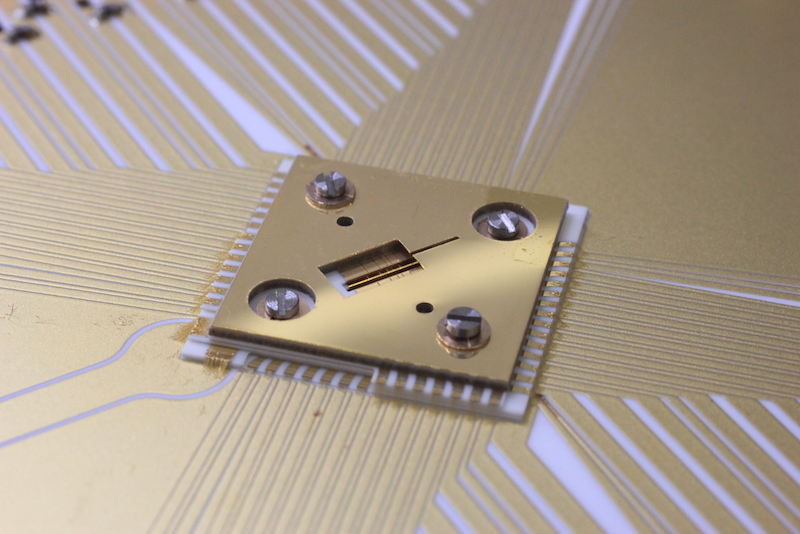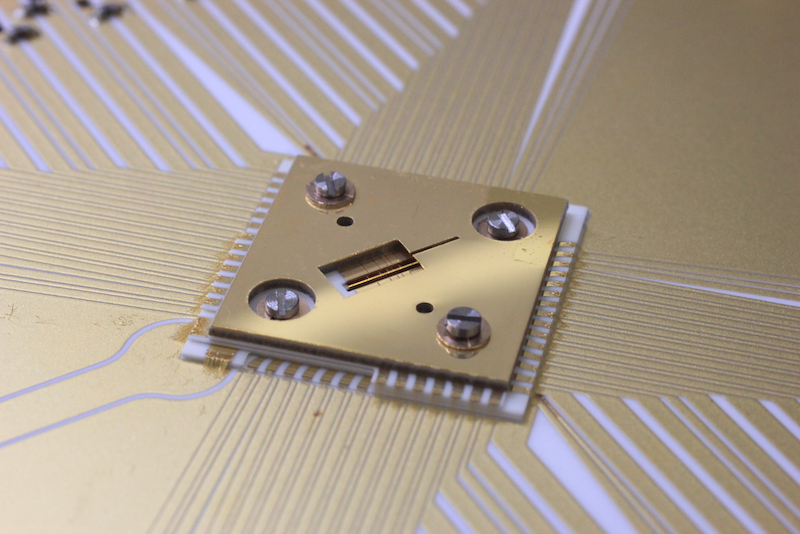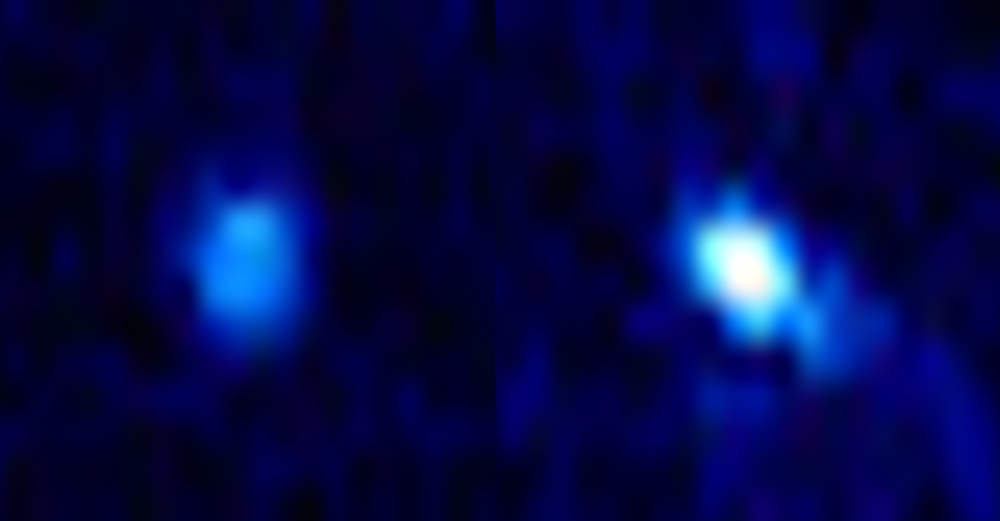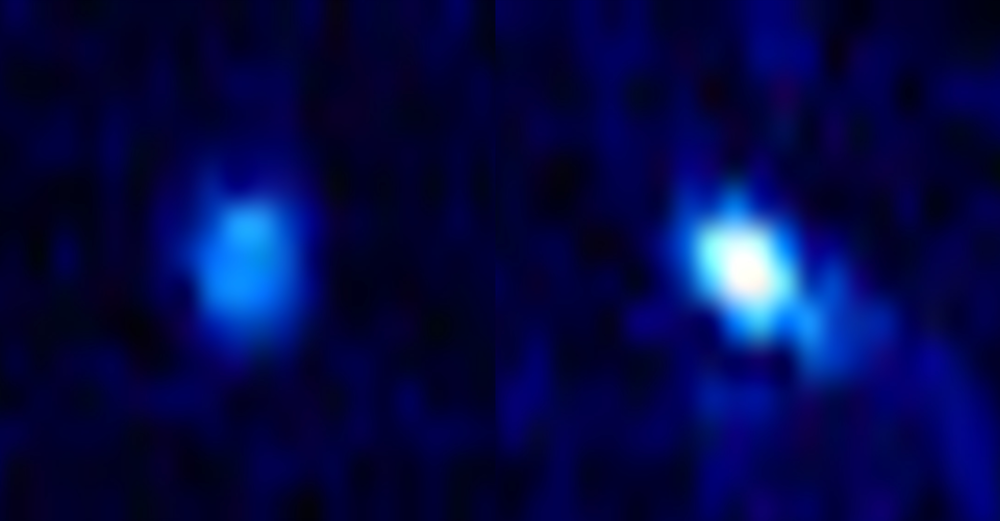Two Atoms Vibrate Like a Laser
Phonon lasers replace the light excitations (photons) that are used in a standard laser with vibrational excitations of matter (phonons). Researchers have now coaxed two ions into forming a phonon laser containing fewer than 10 phonons, placing it firmly in the quantum regime [1], whereas previous phonon lasers had at least 10,000 phonons. The researchers plan to use this quantum phonon laser as a tool to investigate the role of dissipation in the behavior of quantum systems.
Dissipation—energy leaking into or out of a system in the form of heat—is often seen as a nuisance in physics, for example, when it takes the form of air resistance and reduces the fuel efficiency of a car or an airplane. But quantum systems also exhibit dissipation, and its effects in the quantum realm are not fully understood. Jonathan Home of the Swiss Federal Institute of Technology (ETH) in Zurich and his colleagues wanted to investigate how two separate sources of dissipation can interact to affect the behavior of a quantum system. “A laser is the simplest quantum system we could think of” that allows such experiments, Home says.
The team focused on the amplification within a laser. In a conventional laser, this amplification occurs in a solid or gaseous medium that is supplied with energy, which is converted into a large number of photons. In the so-called lasing phase, the oscillations of these photons are synchronized, or coherent, which is a hallmark feature of a laser. This conversion of energy from a classical source into coherent photons is considered a type of dissipation under the more expansive definition that applies to quantum systems. So a laser has two dissipation channels that play competing roles: the process by which energy is pumped in and the process by which photons leak out. When the amplification is strong enough to overcome the leakage, the system lases, and the photon number grows until it reaches a plateau.
Home and his team used the shared vibrational motion of two ionized atoms—one calcium and one beryllium—to create their phonon laser. The atoms could oscillate in their electric field trap like two coupled pendulums swinging back and forth. Employing standard techniques, the researchers used laser light to increase and decrease the oscillation amplitude of the two-ion system, which in quantum terms means adding or subtracting phonons. One pair of beams was tuned to add phonons to the beryllium ion, while another pair was tuned to take phonons away through the calcium ion.
The two pairs of lasers allowed Home and his colleagues to control each dissipation channel independently. They determined the number and character of the phonons present by monitoring the fluorescence of the atoms in response to laser illumination. As the team varied the relative strengths of the two dissipation channels, the system underwent a transition from a phase in which there was leakage of phonons to a lasing phase, in which the number of phonons did not decrease. In this phase, the team was able to see the coherent state of the phonons, helping to prove that they had created a true phonon laser.
The results provide the first experimental verification of predictions for a quantum phonon laser, and the researchers say that they have demonstrated tools that will help them explore more exotic dissipative systems. For example, Home plans to engineer a similar system that would generate a so-called squeezed-laser quantum state that could be useful for sensing or for quantum computing.
Diego Porras, a theoretical quantum physicist at the Spanish National Research Council, calls the experiment “fantastic,” adding that it represents the first example of a quantum system with two dissipation channels where such a high degree of control was demonstrated. Tracy Northup, an experimental quantum physicist at the University of Innsbruck in Austria, says that while a phonon laser may seem like a very specific system, understanding the interplay between the ions, their motion, and the dissipation is broadly applicable to many quantum systems. She also sees another benefit of the results. “I hope this [work] reminds people that ions are cool, not just for building quantum computers, but also for this really, really beautiful control needed to see fun underlying physics.”
–Katie McCormick
Katie McCormick is a freelance science writer based in Sacramento, California.
References
- T. Behrle et al., “Phonon laser in the quantum regime,” Phys. Rev. Lett. 131, 043605 (2023).







